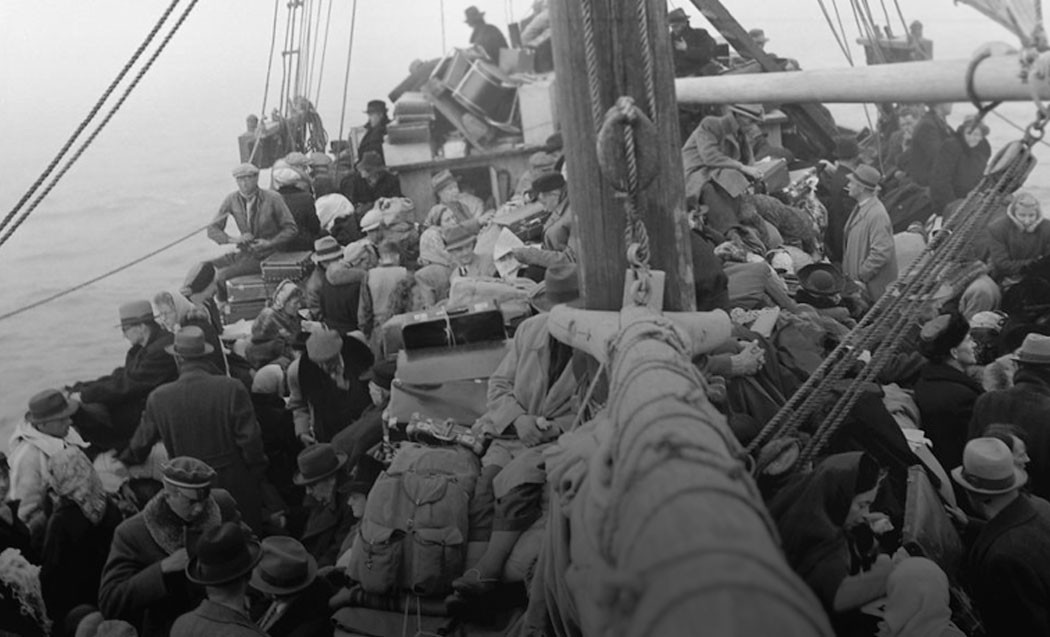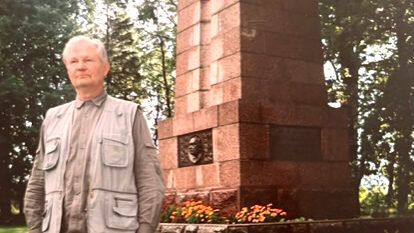Word Council board member and head of the Estonian community in the Czech Republic, prof. Iivi Zajedova, has been the initiator and the current co-ordinator of the idea. Memorializing world wide the departure of Estonian refugees one quarter century ago is much more than acknowledging a historical event.
Historians in general have agreed that about 80,000 refugees escaped Estonia during the late summer and early fall of 1944. Some 6 – 9% perished at sea. Just three short years before on June 14, 1941 thousands of Estonians were deported to Siberia, many of whom died on the way or under inhuman conditions in concentration camps. This and other acts of terror by the same brutal regime that was rapidly overtaking the country was vivid in the minds of those fleeing three years later.
Even women on the verge of giving birth risked the autumn storms of the Baltic Sea rather than the real possibility of vanishing at sea.
All who fled were convinced that the West would see the enormous injustice of countries such as Estonia, Latvia and Lithuania being imprisoned by a inhumane totalitarian state. They fully expected Western countries, through war if necessary, to liberate their homelands from Communism. This writer remembers Estonian Scouting icon Heino Jõe, deliver a speech in a Swedish refugee camp, stating that we wouldn’t be in exile for long. That it was inevitable that Western governments would not accept the brutal and inhumane takeover of free and democratic countries. We were all convinced by this expectancy. It made sense. Things had to normalize.
The Communist regime in tandem with the Red Army and the NKVD that grabbed power in late 1944 began to refer to those who had managed to flee (keeping in mind the thousands who were thwarted from fleeing due to lack of boats, opportunity etc.) as ‘escapees’ (põgenejad). However in quick order this label was officially discarded and the Estonian refugees were derisively labelled as émigrés.
Yes, the Communist regime insisted that Estonians in 1944 left of there own free will, unhindered, looking for better economic opportunity. Even in the encyclopaedia published after independence was re-established in 1991 uses expressions such as “went to Germany”, “emigrated to Sweden”, “went to Germany via Poland”, etc. The closest the encyclopaedia comes to an accurate description is “fled from war”. Unfortunately the old Soviet style terminology is on the odd occasion still used.
Some have suggested that this is simply semantic confusion. It’s, however, a deliberate adherence, officially ordered notion, that people don’t flee or escape from a progressive popular regime. One had to stick to the story that they didn’t fear Soviet persecution.
The newspapers, booklets, books and other material sent to the Estonians in the West were full of cliché expressions: Estonian community leaders – “émigré upper crust”; political activists – “hitlerites”, “fascists”.
A deeply regrettable incident occurred in the early 1990’s when an Estonian government official, in a newspaper article likened Estonian refugees in the West to “rats fleeing a sinking ship”. The article spurred widespread protest. That individual was dismissed from government employment.
The record has been set straight in Estonian history books, media, in the general understanding of events by people in the West. The reality is something that Moscow still denies. For this and for future generations a Day of Remembrance is undeniably needed.
Laas Leivat, Toronto




